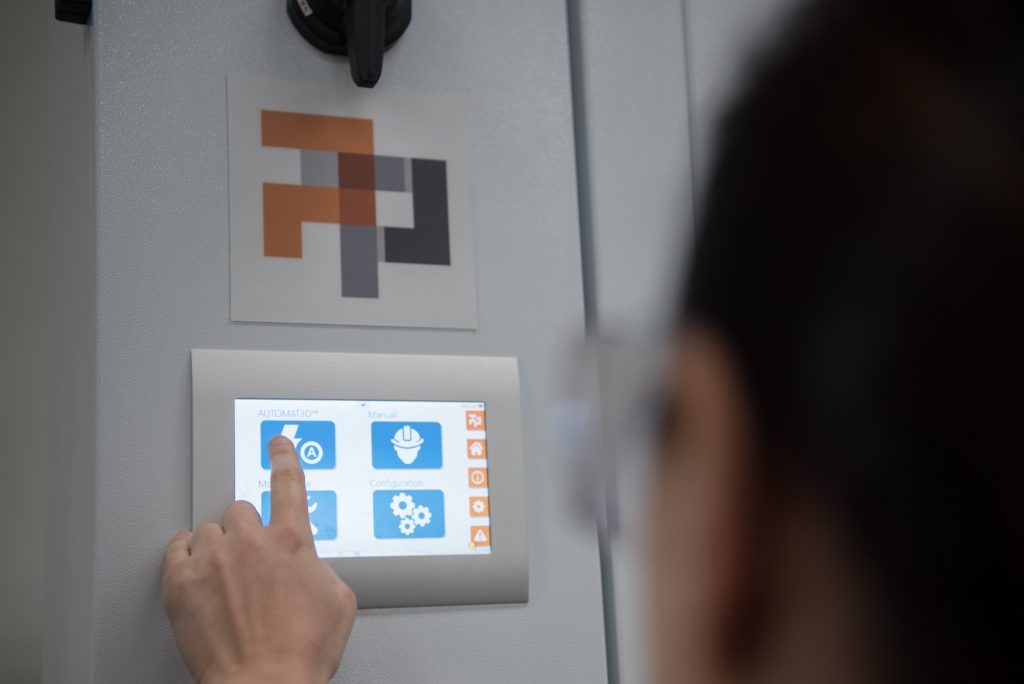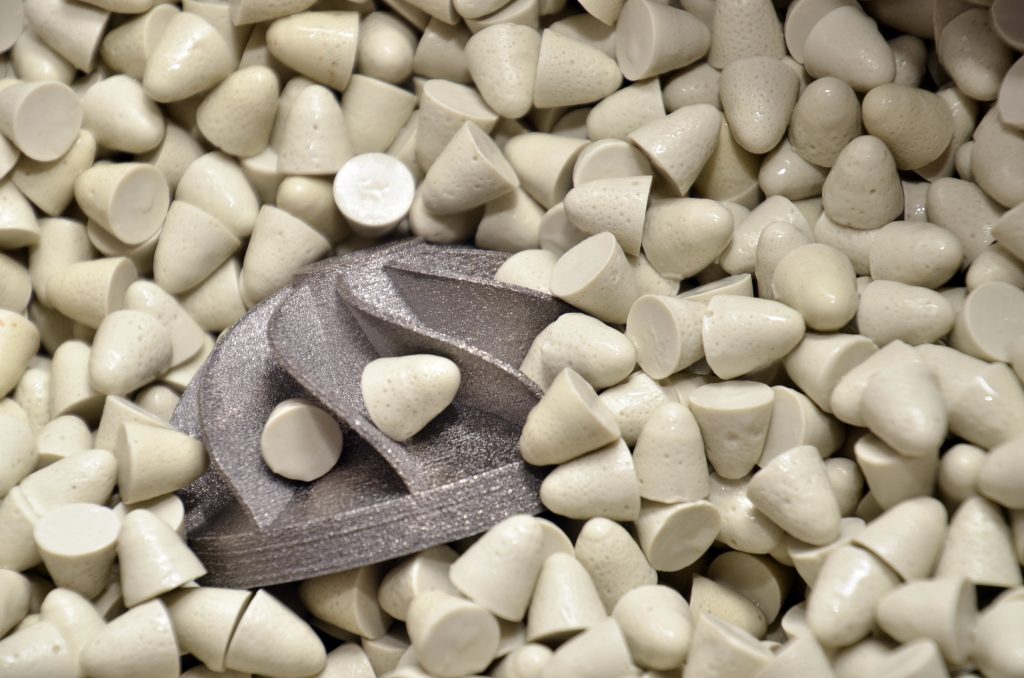Post Processing is an often overlooked element of 3D printing. Especially if you want consumer-friendly parts, want to manufacture at scale or are looking for better finish post-processing is very important in 3D printing. A third of costs of a 3D printed part may be due to post-processing costs, depowedering and other finishing steps. Increased automation and automated post-processing solutions would go far to reduce that cost significantly. We’re going from one amazing part that’s coddled to millions of production parts that have to perform. A new generation of equipment will usher in true production in 3D printing across many industries. US-based Post Process Technologies has a software-focused post-processing approach to improving 3D printed parts. We interviewed Post Process CEO Jeff Mize to find out more about the company.

Why is post-processing important?
Additive manufacturing has three steps: design, build and post-processing. Post-processing (also called post-printing) is when the part becomes customer ready. When people think about a 3D part, they think about the smooth, polished part shown on a trade show floor or shipped to a customer. But the reality is that the part doesn’t come off the 3D printer looking that way. Often the parts have support materials on them that require removal and have rough surfaces requiring finishing.
What percentage of part cost is post-processing?
According to the 2018 Wohler’s report, 27% of 3D print costs can be associated with post-printing. We work with our customers to understand the hidden costs of post-printing – which also includes the cost of part breakage. Our customers indicate that part breakage, using manual and traditional manufacturing techniques, averages 4%.
How long does post-processing take? (I know that this is a rather broad example but just take a typical part plus high and low ranges in cost and time).
Post-processing time is highly variable based on the 3D printing technology, the print and support material, the part geometry, and the desired result. Parts with internal channels, for example, take more time to remove support materials from interior chambers. Parts being used in aerospace applications may require a lower Ra to eliminate drag versus other applications. Our software-driven solutions allow our customers to fine-tune their approach based on the infinite possibilities that are part of the power of additive manufacturing.

What kind of equipment do you sell?
We don’t sell equipment. We have created and sell a comprehensive solution that integrates software, hardware and chemistry. Our solutions are available for support removal and surface finishing across almost every 3D print technology. We have a range of solutions designed to accommodate different material and part requirements such as large format parts.
How does this save me money?
Customers are impressed by the ROI on our solutions but consistently state the number one reason to select PostProcess is the unparalleled consistency of results. The results our solutions achieve are simply not achievable without a software-driven solution. Savings come in several areas including dramatic reductions in attended technician time, reduction in part breakage especially given the high cost of materials associated with 3D printing, and fast throughput of parts processing. Our customers breakeven on the purchase of our solutions is usually in 10-30 weeks – so weeks and months, not months and years.
What is the business case for using your equipment?
The consistency with which high-quality results are achieved is the key business rationale for using PostProcess solutions. Manual solutions or systems ported over from subtractive manufacturing are unable to create replicable results in the additive space which where complex geometries and intricate details are common. We work with our customers to define a comprehensive business case that includes a proprietary ROI calculator. It calculates expected ROI based on 3D print technology, technician and operation time, breakage rate, and costs to output a possible outcome for automated post-processing.

How automated is your equipment?
All of our production solutions are totally automated. This means that they are software-driven solutions with operator / technician engagement limited to a press presses of a button needed to achieve the desired result – and the solutions even come with pre-programmed recipe options. Operator / technician time is often ~1 minute and always <5 minutes. The software can be operated remotely from a tablet or laptop. Even the maintenance scheduling is automated!
How does it work?
Our software has been trained through rigorous analysis of over 500,000 benchmarked parts across all 3D print technologies and materials – and continues to learn from ongoing internal and external benchmarking as well as from the ongoing performance of our growing installed base. The intelligence in our software enables precision energy management. These micro adjustments in all the energy forces in our solutions (ultrasonic, heat, motion, fluid flow, etc.) are critical to the high-quality replicable results we achieve.
For what technologies do you have solutions?
“We have solutions that work across all 3D print technologies so there are automated post-printing options available to virtually anyone on the market.”
What role does software play?
“Software is foundational. Only a software-driven solution can achieve high-quality results that are consistently replicable.”

What is unique about your solution?
It is the only automated solution available on the market today. We have a series of “first and only” achievements including the first and only software-driven solution; intelligent solution (which means it learns and gets smarter over time); and solutions designed specifically for additive manufacturing. We already have 11 patents pending but stay tuned for more first and only announcements.
Why should I pick your company to work with?
Companies choose PostProcess because our automated solutions create results that are not achievable anywhere else today. Many also recognize that our digitized capabilities are essential to their Manufacturing 4.0 goals. As important, companies are excited to work with us because we are focused on an outstanding customer experience from the ease of use of our solutions, through implementation and training, and into ongoing support and service.
Subscribe to Our Email Newsletter
Stay up-to-date on all the latest news from the 3D printing industry and receive information and offers from third party vendors.
You May Also Like
Precision at the Microscale: UK Researchers Advance Medical Devices with BMF’s 3D Printing Tech
University of Nottingham researchers are using Boston Micro Fabrication‘s (BMF) 3D printing technology to develop medical devices that improve compatibility with human tissue. Funded by a UK grant, this project...
3D Printing Webinar and Event Roundup: April 21, 2024
It’s another busy week of webinars and events, starting with Hannover Messe in Germany and continuing with Metalcasting Congress, Chinaplas, TechBlick’s Innovation Festival, and more. Stratasys continues its advanced training...
3D Printing Webinar and Event Roundup: March 17, 2024
It’s another busy week of webinars and events, including SALMED 2024 and AM Forum in Berlin. Stratasys continues its in-person training and is offering two webinars, ASTM is holding a...
3D Printed Micro Antenna is 15% Smaller and 6X Lighter
Horizon Microtechnologies has achieved success in creating a high-frequency D-Band horn antenna through micro 3D printing. However, this achievement did not rely solely on 3D printing; it involved a combination...





























